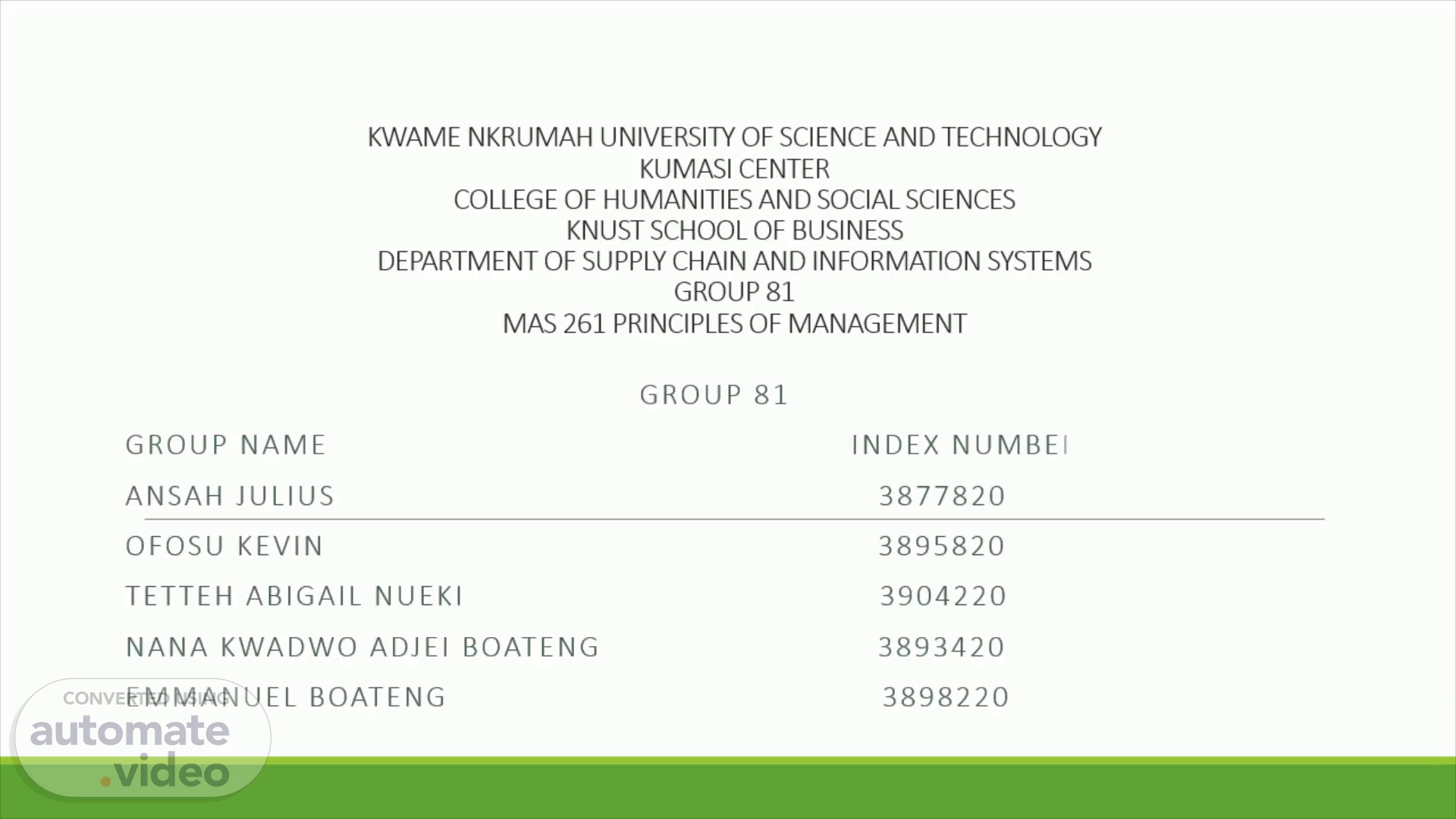
KWAME NKRUMAH UNIVERSITY OF SCIENCE AND TECHNOLOGY KUMASI CENTER COLLEGE OF HUMANITIES AND SOCIAL SCIENCES KNUST SCHOOL OF BUSINESS DEPARTMENT OF SUPPLY CHAIN AND INFORMATION SYSTEMS GROUP 81 MAS 261 PRINCIPLES OF MANAGEMENT
Scene 1 (0s)
KWAME NKRUMAH UNIVERSITY OF SCIENCE AND TECHNOLOGY KUMASI CENTER COLLEGE OF HUMANITIES AND SOCIAL SCIENCES KNUST SCHOOL OF BUSINESS DEPARTMENT OF SUPPLY CHAIN AND INFORMATION SYSTEMS GROUP 81 MAS 261 PRINCIPLES OF MANAGEMENT.
Scene 3 (22s)
DISCRIMINATION. Discrimination in the workplace is based on discrimination and occurs when an employee is treated unfairly on the basis of gender, race, religion, pregnancy and childbirth or disability. If you treat another person differently because they have characteristics that are different from other employees you will be acting illegally. Direct discrimination occurs when someone is treated worse than other employees. For example, an employee has job qualification but you refuse because you think he may want to start a family soon.
Scene 5 (51s)
CAUSES OF DISCRIMINATION. Religion; People from different religion may see others as inferior thereby leading to discrimination. 2. Ethnocentrism; Is a way of viewing one’s ethnicity as superior than other leading to discrimination . 3. Racism; Seeing people from other race as inferior and unrecognized. 4. Age. 5. Health status (disability).
Scene 7 (1m 13s)
EFFECTS OF DISCRIMINATION. 1. Physical Impact on Employees; An employee may collect sick days or drink constantly to avoid discrimination which will lead to absenteeism. Absenteeism can disrupt a lot of work , making him appear nervous and depressed about future days or presentations. 2. Poor production; When people are discriminated against, they tend to be less engaged and less productive. People who feel discriminated against are often less engaged, have poorer wellbeing and logically would prefer to work elsewhere. 3. Financial Loss; Discrimination not only affects one employee, but can have a profound effect on the business as a whole. Companies can face financial losses due to ongoing discrimination. For example, if an employees resigns because of harassment, the business would spend money trying to hire and train a new employee and this will reduce their money.
Scene 9 (1m 54s)
SOLUTIONS TODISCRIMINATION. 1. Education and Training; The public needs to receive public education about the causes and consequences of discrimination. People have to be educated and trained in workplaces about discrimination and its effects on the business as a whole. 2. Enforcement of Laws against discrimination; The rules and regulations set up to fight against discrimination must be enforced and appropriate sanctions and punishment must be meted out to those who disobeys them. 3. Conduct team building activities; Holding team building exercises and events help employees interact and understand each other. This is a great opportunity to encourage diversity and inclusion. 4. Establish a process for resolving discrimination issues. 5. Hiring people of diverse backgrounds also help to foster respect for those different from yourself. Respecting others is essential to cultivating a harmonious society..
Scene 11 (2m 33s)
CONCLUSION. Discrimination is a major challenge in modern society. First of all, racism is a threat to democracy, as it is ultimately based on the principles of equality. Discrimination is widely supported in societies based on strong leadership. Such societies often form divisions based on religion, gender, or background. Therefore we can say Discrimination is a very serious subject which needs an immediate attention..